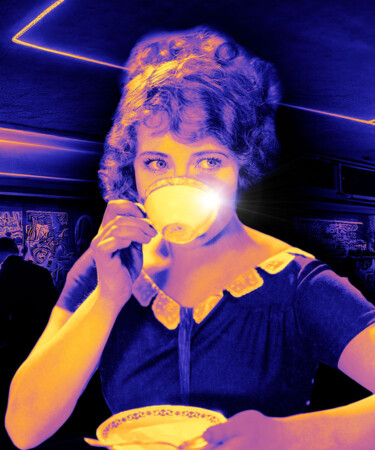Belly up to the bar at any hip speakeasy, and there’s a chance you’ll be served your drink in a teacup. It’s a surprise, perhaps. You were expecting a Nick & Nora glass or a simple coupe, but you’re left instead sipping from a dainty cup on a saucer. Cute.
While the kitschy container adds to the bar’s aesthetic, it also calls back to the speakeasies of the early 20th century, and a time when it made sense to drink in a space hidden behind, say, a telephone box.
During America’s “dry” period, many illicit saloons concealed booze in innocuous-looking containers, giving drinkers peace of mind and bar managers (perhaps) a hope of plausible deniability, should there be a police raid.
From a distance — far enough so the boozy smell couldn’t be detected — dark spirits or a mixed drink might appear the same as an Earl Grey.
As teacup pours were built to intentionally evade detection, it’s difficult to pinpoint exactly which drinking den originated this trend. But the practice quickly prevailed.
New York’s historic bar Chumley’s, which opened in 1922, served booze in kitschy china teacups and brown paper bags throughout Prohibition. Until its permanent closure in 2020, guests could still enjoy drinks in the same sneaky manner at the Greenwich Village location.
At the historic Omni Mount Washington Resort in New Hampshire, a popular spot to stop on the bootlegging route to Canada, guests surreptitiously drank at the location’s squash court. Resort visitors sipped liquor from teacups while gathered around the court, which was situated near a cave that overlooked the entrance, according to the National Trust for Historic Preservation. In the case of police raids, which sometimes occurred, patrons stashed booze bottles in the cave and assumed their positions to enjoy a leisurely cup of “tea” courtside.
Numerous other establishments provided thirsty visitors with similarly sneaky servings of booze — even after Prohibition ended. Now-shuttered Angel’s Share, which opened in New York in 1993, sparked the speakeasy trend. Others soon followed, embracing the Roaring ‘20s aesthetic by returning to teacup cocktails. Some bars, such as Boredel’s in Chicago, have gone as far as batching cocktails in stealthy (yet dainty) teapots.
Teacups and saucers have undoubtedly cemented their place in modern speakeasies, playing well alongside hidden doors, entryway passwords, and vintage decor.
We’ll raise a glass — or teacup — to that.
